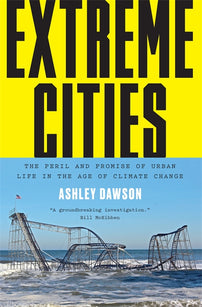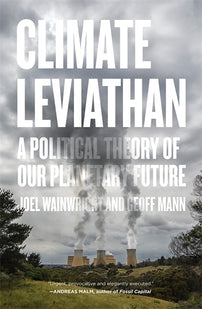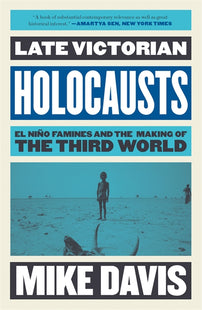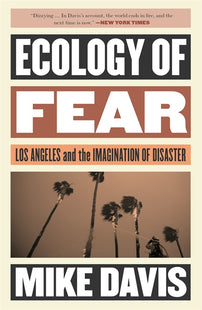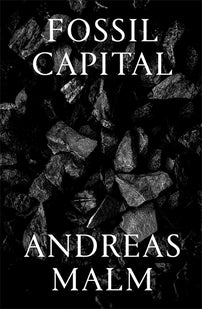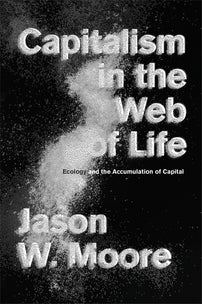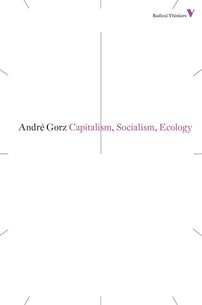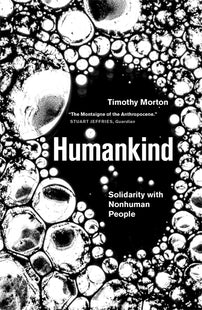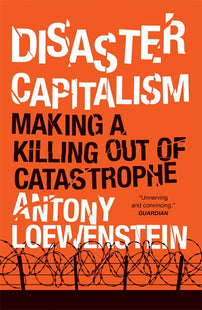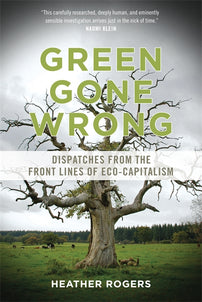The Year of Environmental Disaster
2017 demonstrated that climate chaos is happening here and now rather than in some distant future.

In his Prison Notebooks, Italian revolutionary leader and theorist Antonio Gramsci wrote, “The crisis consists precisely in the fact that the old is dying and the new cannot be born; in this interregnum a great variety of morbid symptoms appear.” Gramsci’s famous dictum of 1930 resonates in many ways with our present, crisis-ridden moment, but today it is not simply that we cannot imagine an alternative to capitalism despite the evident crises in the ideological underpinnings that have sustained neoliberalism since the 1970s. Worse, in its death throes the old order is destroying the very possibility of life on this planet, at least on any time scale that has meaning for human beings. The crisis of our day is not just mutilating the present but also devouring the future.
In the last year the racist, rapist CEO of the US and his gang of craven flunkies have greenlighted extreme extraction projects like the Dakota Access and Keystone XL pipelines, attacked climate scientists, turned the agencies charged with protecting the environment into arms of fossil capitalism, and dispatched a team of oil and coal executives to make a mockery of the UN climate talks in Bonn. And Trumpism is not an isolated phenomenon: popular authoritarianism is on the march in many other countries around the world, with correspondingly dire consequences for climate refugees, fenceline communities, and ecosystem people.
Evidence of the calamitous impact of climate change — which the Trump regime’s rollback of environmental regulations is sure to accelerate — is not hard to find. Indeed, 2017 might best be dubbed the year of environmental disaster. From the hurricanes that prostrated Houston and Puerto Rico, to the wildfires that raged through California and the Southwest, to severe droughts that devastated farming in southern and eastern Africa for the third year running, to floods that inundated Bangladesh, Nepal, and parts of India, displacing over 41 million people, 2017 demonstrated that climate chaos is happening here and now rather than in some distant future.
But if the present is wracked with political and environmental disasters, the future looks far more ominous. New research by the Global Carbon Project showed that global carbon dioxide emissions are once again rising, after flat-lining for three straight years. These findings dashed the hopes of some that global CO2 emissions had peaked for good. And this disturbing trend looks set to intensify. At the UN Climate Talks in Bonn, shortly after declaring that “climate change is an issue determining our destiny as mankind,” German Chancellor Angela Merkel acknowledged that her country is likely to miss the goals it set itself for cutting greenhouse gas emissions. Germany will not be alone in falling short. No major industrialized country is currently on track to fulfill its Paris pledge, according to new data from the Climate Action Tracker. And even if governments do take further steps to meet their individual pledges, the world will still be on pace to warm well in excess of 2° C. This level of warming is locking in irreversible sea level rise of at least two meters (or six and a half feet). This means that the entire bottom third of Florida will be inundated by 2100. Miami and New Orleans will have to be abandoned. Major global cities will face catastrophic flooding, with Asia megacities like Shanghai, Shenzhen, Bangkok, Mumbai, Dhaka and Osaka worst affected.
Looking back over this year of environmental disaster, it is all too easy to feel like Walter Benjamin’s Angel of History, gazing transfixed at a chain of events that appear as a single catastrophe, piling wreckage on wreckage. As Benjamin notes, the Angel of History would like to “awaken the dead and make whole what has been smashed” but is being irresistibly blown into the future by the storm called “progress.” How, Benjamin implicitly asks us, can we turn the spectacle of past catastrophe into a mobilizing force in the present. What, to situate Benjamin’s Angel of History in the present, can the climate disasters of 2017 teach us?
Space constrains me to focus on only three calamities, but the lessons they teach are fundamental. First of all, the devastation of Houston by Hurricane Harvey showed us that the US model of urbanization is unsustainable. Harvey dumped nearly 52 inches of rain on Houston, making it the biggest rainstorm in the history of the US. But what made this deluge so lethal was a series of bad (and corrupt) planning decisions. Explosive growth in Houston’s exurban fringes mowed down wetlands in recent decades, stripping the city of much of its natural flood protection. Coastal ecologists in the Houston area have documented the destruction of tens of thousands of acres of freshwater wetlands, which has no planning or public transportation to speak of, as the city expanded pell-mell to satisfy residents’ desire for affordable housing. Replacing water-absorbing natural terrain with cement and asphalt, sprawl ensured that Harvey’s heavy rainfall would flood homes rather than sinking into the earth. When public officials mounted efforts to prevent sprawl they faced stiff resistance and were ultimately stymied by local real estate interests. The money to be made in the short term simply overrode the warnings of scientists and members of the public who worried about the potential for catastrophic flooding. Houston shows us what not to do if we wish to build climate-proof cities.
Scarcely three weeks later, Hurricane Maria struck a Puerto Rico already severely weakened by a debt crisis decades in the making. With draconian austerity imposed by a congressionally appointed ruling junta, Puerto Rico’s health system and power grid were on the verge of collapse before Maria. The storm wiped out what was left of the deteriorating infrastructure of the commonwealth, plunging the island into a still-unresolved humanitarian crisis. Two months after the disaster, half of Puerto Rico’s residents remain without power. In a blatantly corrupt deal, a tiny company based in the hometown of Interior Secretary Ryan Zinke was awarded a three hundred-million-dollar contract to reconstruct the island’s power grid. That company, Whitefish, has now halted repairs, accusing the island’s power utility of failing to pay it adequately. Analyzing the contract awarded to Whitefish, San Juan mayor Carmen Yulín Cruz found that public audits of the firm’s work were explicitly prohibited.
While the Whitefish deal is a particularly noxious example of disaster capitalism, it is fairly typical of how infrastructural development works in today’s global neoliberal context. Under so-called “public-private partnerships” or P3s, a private company finances, builds, and operates public services, and gets repaid through charges on users and/or payments from the public authority charged with providing such services. The scandalous Whitefish deal is characteristic of the opaque contracts governing P3s, which typically are highly secretive (purportedly to protect "commercial secrets"), are finalized with little or no public consultation, and are endemically prone to corruption. As Sean Sweeney and John Treat document in their recent working paper for Trade Unions for Energy Democracy, P3 contracts have become subject to financial speculation in recent years, making short term financial gain rather than the provision of decent, affordable public services their primary aim. The Whitefish debacle and the destruction of Puerto Rico’s power grid is symptomatic of a broader crisis affecting public utilities around the world, at the precise time when making a speedy transition to renewable energy is imperative if carbon emissions are to be reined in.
To avoid climate catastrophe, we must decarbonize power generation, and we must do it fast. A March 2017 assessment from the International Energy Agency and the International Renewable Energy Agency estimated that the share of renewable energy “needs to increase from around 15% of the primary energy supply in 2015 to 65% in 2050.” Wind and solar power has increased significantly in recent years, but, as the spiraling carbon emissions announced at Bonn revealed, investments in renewable energy are not growing at anything like the speed or scale necessary to achieve hoped-for mitigation levels. Indeed, in 2016 the IEA noted in its bland bureaucratic language that, “Globally, energy investment is not yet consistent with the transition to a low-carbon energy system envisaged in the Paris Climate Agreement.”
The Trump regime is doing its best to sabotage these aspirations for planetary survival. Indeed, the final environmental catastrophe of 2017 is so-called “Tax Reform,” which should really be called what it is: naked class warfare by the oligarchs and their (s)elected minions in Congress. In a totally hypocritical pretense at balancing the federal budget while shredding the tattered remnants of social democracy, the tax bill opens the Arctic National Wildlife Refuge to oil and fracked gas drilling. It would be difficult to imagine a more iconic place for fossil capitalism to destroy than ANWR. And it would be hard to invent a more infernal marriage than the one effecting this destruction, linking evisceration of the social commonwealth with destruction of the planetary environmental commons. This is the fundamental, exterminatory logic of capital laid bare, triumphant, and unfettered.
My allusions to Gramsci and Benjamin at the outset of this review of the last year of environmental disasters were not purely rhetorical. Both of these great activist intellectuals wrote in the shadow of fascist domination, and their gloomy assessments of the political horizon are informed by this chilling reality. Today the US CEO is an unrepentant neo-Nazi sympathizer, as his support for extremist hate groups in Britain and the US over the last year has made abundantly clear. Yet virtually the entire Republican party and the elites that bankroll it continue to work with him in order to plunder yet more loot from public coffers, the fast-dwindling middle class, and the poor. They either do not remember or else care little for the lessons of the 1930s about coddling fascists. And they seem to be totally impervious to the urgent warnings of scientists concerning climate disaster. As if the ignominy of the 1% and their (s)elected stooges were not bad enough, significant segments of the working class and organized labor also support Trump.
Our only hope for emerging from the present terminal crisis of capital lies in offering a new narrative of a great, mobilizing common cause. And this story must not be one of hollow, largely rhetorical hope of the sort purveyed by Obama’s New Green Deal but must be backed up with genuine plans for the deep and sweeping economic transformation for which so many in this crisis-wracked country (and many other parts of the world) clearly hunger. Instead of the largely negative vision of cuts in carbon emissions, we need a positive vision of social transformation. We need, in sum, a Rapid Adaptation and Mitigation Project that is also a campaign of liberation from decades of neoliberal austerity.
Since free market efforts to decarbonize society by shifting to renewable energy have failed us, this massive mobilization must be led by the public sector, and must provide millions of well-paying, secure climate jobs. It must make whole the precariat, and, to peel away sectors of labor that are currently supporting Trump’s promises of fossil fueled jobs, workers who lose jobs building pipelines, working on oil rigs, or laboring in the killing fracking fields must be guaranteed equally well-paying climate jobs.
Driven by the kind of grassroots mobilization that the Bernie movement hinted was possible, this will be a campaign to build a national, 100% renewable energy grid and to climate-proof our cities in the course of a few short decades. The scale of transformation we need to make is daunting since we need to shift not only power generation but much of our transportation and built infrastructure to renewable energy. We must embark on a project on a scale even greater than the Allied mobilization during the Second World War. But like that wartime campaign, this mobilization promises to forge new solidarities and a sense of collective possibility. If it is driven by a radical vision for an egalitarian future, it will garner widespread support by promising to redeem our current savage capitalist condition.
To those who remain skeptical that such a utopian project of emancipation may be realized, I say we have nothing to lose but the all-too-immanent prospect of extinction. It is time to awaken the dead and make whole what has been smashed. We have a world to win.
[book-strip index="1" style="display"]